Panama Part Two.

Catacaos
Graham Shaw
Tue 29 Mar 2011 20:12
|
THE PANAMA CANAL
Many sailors are worried about the unknown before
transitting the Panama Canal. It is a world famous marvel of engineering,
enabling ships to knock thousands of miles off voyages, and yachts to do what we
are doing (going round Cape Horn would not be something we would do in
Catacaos!) In reality the Canal is probably much smaller than most people
would think - a total of 41 nautical miles from end to end, with three locks
lifting you up a total of 26 metres at the Atlantic end, a lake and a
cutting to go through, and three locks to drop you back down the 26 metres to
the Pacific Ocean. Properly organised, with good crew, it should present
no problems, and indeed of probably three hundred locks I have been through, our
transit was one of the smoothest and most relaxed I have ever done.
The locks are 1050 feet long and 110 feet wide, and to make the most of this,
many ships are built to those dimensions, giving rise to the name "Panamax"
ships. Obviously these ships pay heavily (up to $200000 and more for
passing through here), and take up all the space, so the likes of us
understandably have to wait. What happens is that yachts and other small
craft are fitted into the locks behind smaller ships which don't take up
all the room. In our case we were behind a ship of only 460 feet in length
- "we" being a total of five yachts. The yachts were rafted together
in a pair, and a group of three, and entered the first of the three
Gatun Locks around 8pm, making it up onto Lake Gatun by 10pm. Here we
moored up for the night, before setting off again the following morning at
6.30. Each yacht is required to have four linehandlers (one person at each
corner of the boat to handle the ropes securing us to the lock walls.)
This obviously meant that we had to find extra willing helpers. It is common
practice for crews of other boats to volunteer thier services as linehandlers
whilst waiting for their own transit date. Partly to pass the time, but
mostly to gain an insight into the process before taking their own boat
through. Lorraine had already been through as a linehandler on a New
Zealand yacht called Beyond, so knew the ropes as it were, and I had been
through on a delivery trip back in 1994. We were joined by Chris and his
daughter Hilary from the British yacht Salamander, and Richard from the
Australian catamaran Boundless 1. They proved to be excellent company and
very competent, leading to a very relaxed and successful passage through the
Canal. Chris and Hilary nicely complemented Richard's arid sense of
humour!
Every ship that goes through the Canal must take a
Pilot on board, who assumes full command of that ship (the only place in the
world where this is the case), but yachts are just required to take an
"advisor". These people are effectively "yacht pilots", but are there in
an advisory capacity. Their knowledge and experience is essential to the
process, however.
Below are Richard, Hilary and Chris, our
"linehandlers", as we approach the first set of locks.
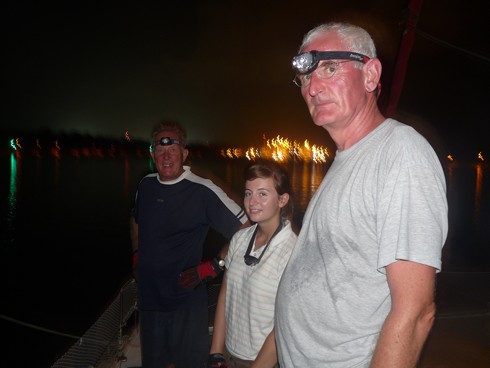 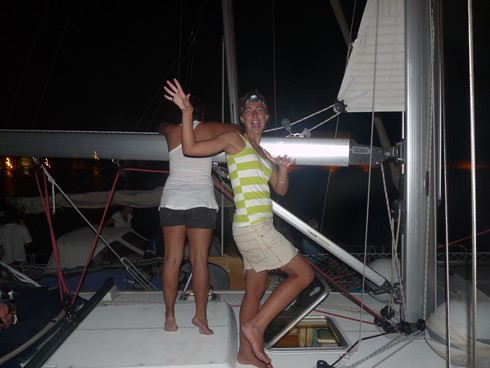 Above is Daisy from the crew of yacht Lolo, which
formed the middle boat of our "raft" for going through the locks.
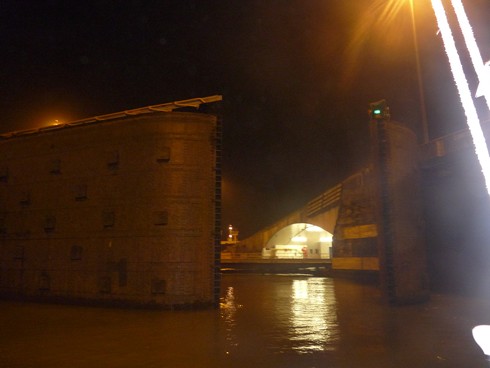 Lock gates closing behind us
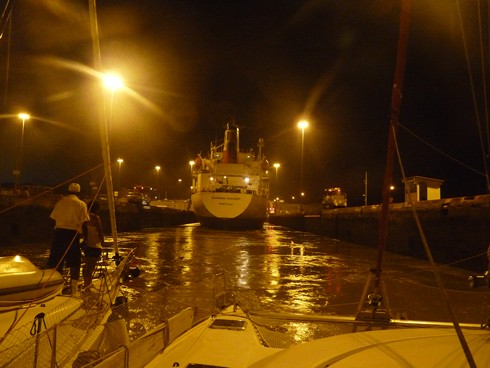 Entering the lock, with three yachts rafted
together, and a reefer ship ahead of us.
 Jose, our pilot (advisor) for the first part of the
canal transit. He disembarked when we moored for the night on Lake Gatun,
and we were joined by a new pilot the next morning.
 Richard and Chris discussing the finer points of
linehandling. Or more likely some other nonsensical banter.
 Sunrise on Lake Gatun before we set off on day two
of our transit.
At some points the canal is quite narrow, so we
pass closer to ships than one would normally!
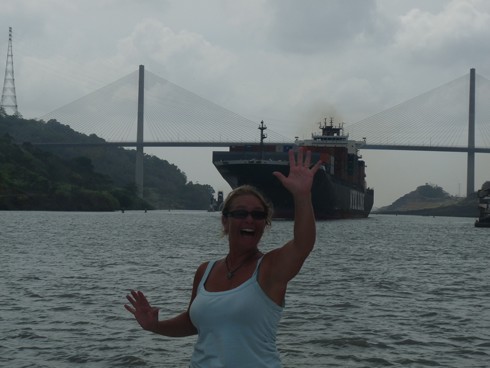 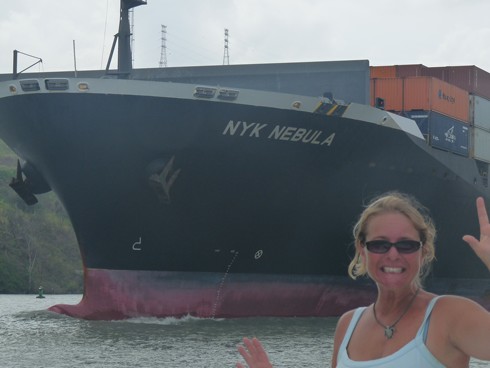 Below, Roy, our pilot on the second
day.
  Entering the Miraflores Locks.
 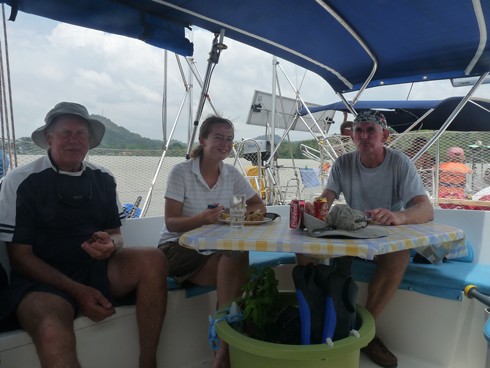 The crew needs to be fed and watered.
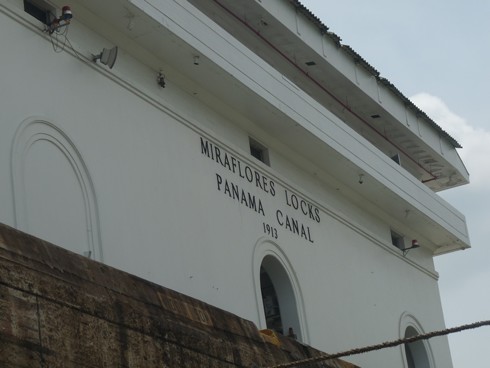 The Panama Canal is soon to celebrate it's one
hundredth birthday. They are currently in the middle of a massive
expansion process, dredging the lake a bit deeper, and building new locks
alongside the existing ones, which will we around 50% longer and wider, allowing
much larger ships to pass through.
 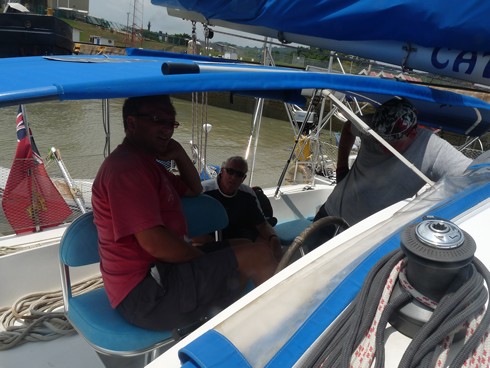 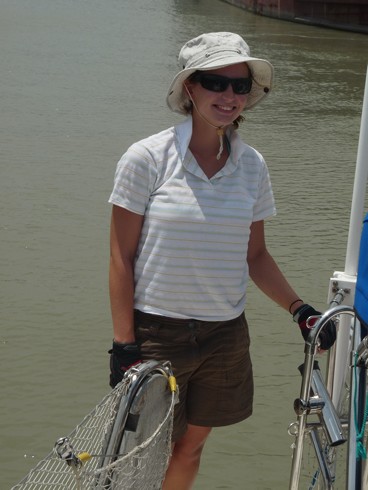 Hilary the linehandler, making the most of her gap
year!
 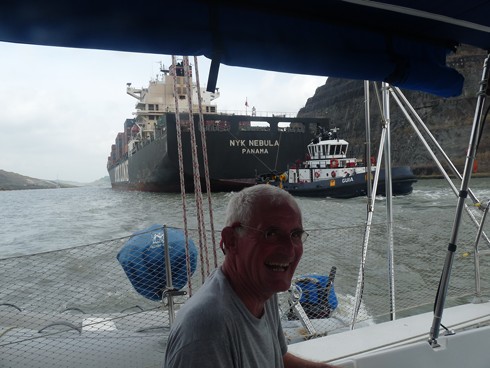 Chris the linehandler, clearly making the most of
something.
 Richard at the helm of Catacaos.
Well, here we are now in the Pacific Ocean.
There are a few jobs to be done over the next day or two, and then we head out
towards the Galapagos Islands. Currently there looks to be very little
wind for this passage, so we will fill every available container with diesel and
head off under motor.
|